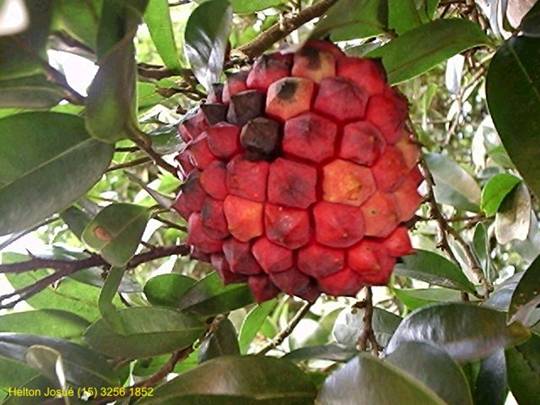DUGUETIA LANCEOLATA
POPULAR NAMES: Pindaiva, Pindaíba, Pindauva, Perovana.
ANNONACEAE

INDIGENOUS NAME: Pindaúva comes from the Tupi-Guarani and means "tree of sticks or reeds" referring to either shoots emerge at the base of the stem of which were used by Indians to make their houses.
Origin: Semideciduous forest (which lose their leaves in a time of year) of the Atlantic Forest from Minas Gerais to Rio Grande do Sul. Brazil
Characteristics:
Tree of straight trunk, green and corky bark, with dense crown and globe,
reachs
Planted in the site of Frutas Raras: November 2005, flowers and fruits have not occurred yet.
Tips for cultivation: Subtropical plant, resistant to frosts to -3°C (27°F), can be grown throughout the country, at any altitude; adapts to rapid drainage of soil or red clay and rich in organic matter.
Propagation:
Seeds are dormant when dry, when once planted, germinate progressively in
Planting:
The seedling can either
be planted in full sun or shade as fast-growing pioneer species.
Plant in the garden
in spaces of
6 x
Cultivating: Make
only the formation of crown pruning and remove only the shoots at the base
of the trunk of the seedling from 3 years.
In the early stages
the seedling likes
irrigation period
that should be
done with
Uses: The fruit has whitish aril surrounding the seed, is delicate and smooth taste that resembles a bit the carrot-and are consumed in natura.
Flowering in the site of Frutas Raras: Not observed yet.
Fruiting in the site of Frutas Raras: Not observed yet.
Back to the seedlist (English) or back to the family Annonaceae (Portuguese)